Sunday, Dec. 21, 2014 | 2 a.m.
No holiday season is more apparent in Las Vegas than the one that boasts Santa as the headliner.
The trappings of Christmas are all around us — the strings of lights blinking on houses and businesses; the overladen trees that dwarf our living room furniture; the garland and mistletoe; the inflatable reindeer and elves; the “real” Santas that miraculously appear at malls.
But in fact, December is filled with many cultural and religious observations and celebrations, a reflection of the diversity that is Las Vegas. Among them:
-
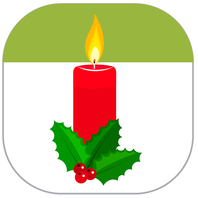
Advent: Nov. 20 - Dec. 24
From Nov. 30 to Dec. 24, Christians prepare for Christmas by observing Advent, derived from the Latin word meaning “coming.”
Its iconic image is a flat evergreen wreath that represents continuous life. Nestled in it are four candles — the colors may vary whether the household is Catholic or Protestant — that believers light, one at a time in a weekly progression, often while saying a penitential prayer. Three of the candles symbolize prayer, penance and good works during Advent; the fourth represents joy. Some wreaths have a fifth, white candle to mark the arrival of Christmas Eve.
-
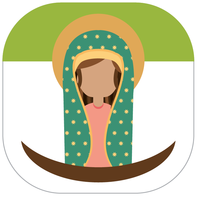
The Feast of Our Lady of Guadalupe: Dec. 12
The Feast of Our Lady of Guadalupe is celebrated Dec. 12, mostly among the Hispanic faithful. It celebrates the day in 1531 the Virgin Mary appeared to St. Juan Diego, an Indian man.
According to popular belief, Mary told Juan she would listen to his people and heal their sorrows. When Juan proved to the bishop he had seen Mary, a basilica was built in the spot of her appearance. It now is the most visited Catholic site in the world.
-
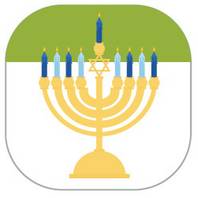
Hanukkah: Dec. 16-23
The eight-day Hanukkah celebration, which started Dec. 16, commemorates the victory of a small band of Jews over Syrian enemies. The Jewish army reclaimed its Holy Temple, and in celebration and gratitude, sought to light a menorah, a type of candelabra. While they found only enough oil for 24 hours of burning, the candles remained lit for eight days, enough time for more oil to be prepared.
Modern observers light one candle each night for the eight days of Hanukkah to honor the miracle.
“There are so many violent acts in the world, we light the menorah to remind ourselves each act of kindness we commit brings more light and positive energy into the world,” explained Rivky Bronchtain, a teacher at Desert Torah Academy, a local Jewish day school.
Fried foods are a holiday tradition because of the importance of oil, and many families exchange gifts.
Several menorah lightings are being conducted throughout the valley.
-

Winter Solstice: Dec. 21
The Winter Solstice, also known as Yule, is celebrated Dec. 21 by pagan groups to honor the birth of the sun and its life-giving qualities. Followers celebrate the shortest day of the year and the promise of spring with circle ceremonies, candle lighting and prayers.
-

Christmas: Dec. 25
Among Christians, Christmas is celebrated Dec. 25 as the day Jesus was born. But there also are several secular ideas that come to a head on the same day.
Saint Nicholas, whom the idea of Santa Claus is based on, was a fourth-century bishop in Turkey who was known for being generous to the poor and became associated with gift giving.
The notion of Santa Claus was further cemented into American culture after Clement Moore wrote “A Visit from St. Nicholas” in 1823. His story describes the saint flying from home to home on a reindeer-drawn sleigh and leaving gifts in the stockings of children. The story later was renamed “The Night Before Christmas.”
Christmas trees historically have been evergreen trees, symbols of life during the depths of winter. Queen Victoria and her husband, Prince Albert, are credited for promoting the custom of Christmas trees and gift giving, having decorated Windsor Castle with extravagant trees and gifts hanging from branches for children’s enjoyment.
-
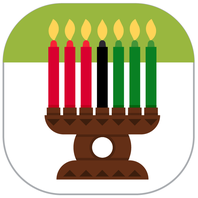
Kwanzaa: Dec. 26 - Jan. 1
Kwanzaa is celebrated Dec. 26 to Jan. 1 by the black community to honor members’ African roots. Maulana Karenga, an Africana studies professor, created the holiday in 1966 after the Watts riots in Los Angeles, to unify people.
Each night of the celebration, a child lights a candle on the Kinara, a candle holder, and one of Kwanzaa’s Nguzo Saba, or seven principles, is discussed. They are unity, self-determination, responsibility, cooperative economics, purpose, creativity and faith.
Although each family tells different stories and celebrates in its own way, Kwanzaa often ends with a feast known as Karamu.
-
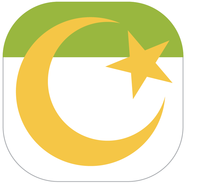
Ramadan
Sometimes in December — but not this year, when it was June 28-July 28 — falls the holiest of Islamic holy days, Ramadan. It celebrates the lunar month during which the Quran, the final revelation of God’s word to the prophet Muhammad and the central religious text of Islam, was revealed.
Ramadan is marked by a month of fasting during daylight hours, with small meals eaten at night. It is a period of worship, charity, contemplation and fellowship with family and friends to strengthen community.
Ramadan won’t occur in December again until the 2030s.








Join the Discussion:
Check this out for a full explanation of our conversion to the LiveFyre commenting system and instructions on how to sign up for an account.
Full comments policy